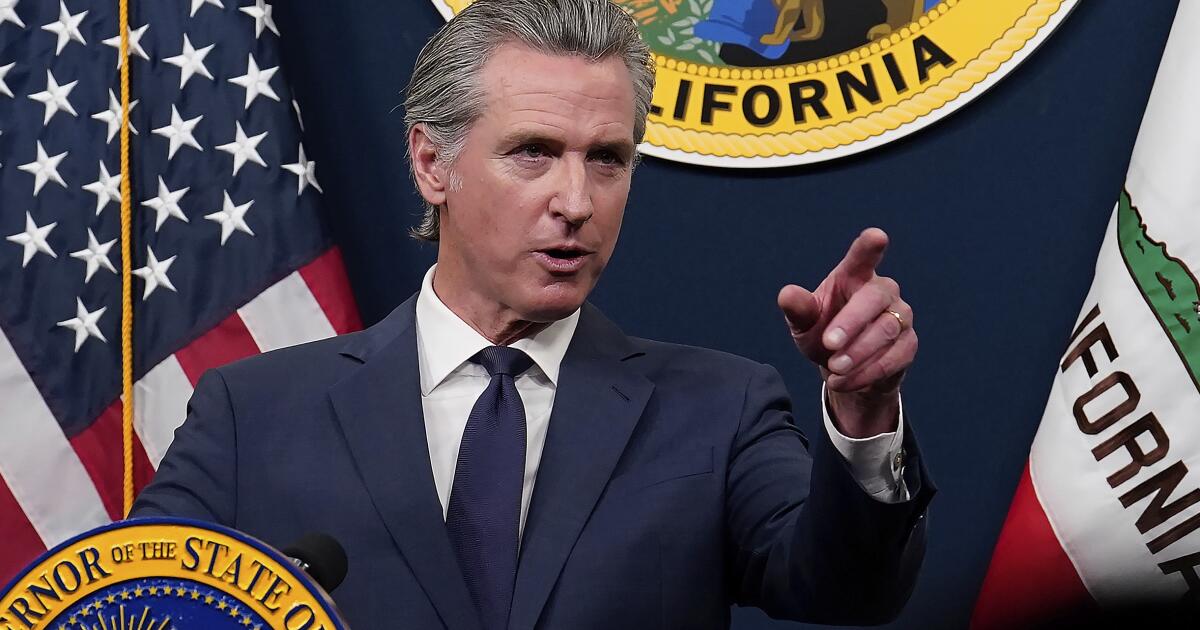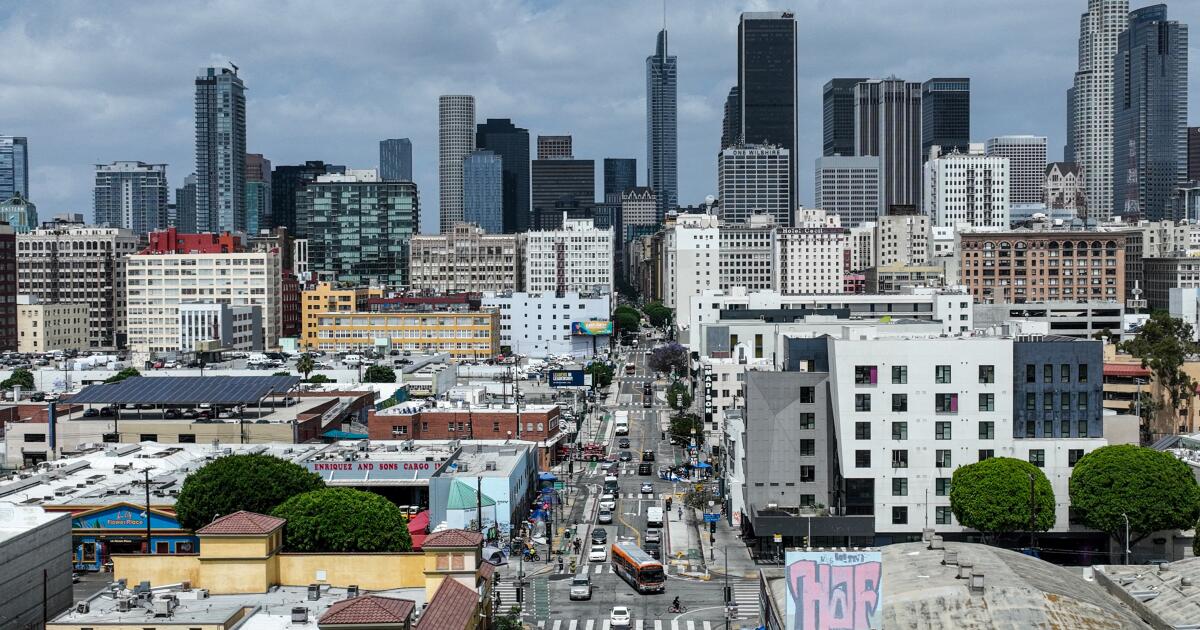California closes $12-billion deficit by cutting back immigrants’ access to healthcare
SACRAMENTO — California Gov. Gavin Newsom signed on Friday a budget that pares back a number of progressive priorities, including a landmark healthcare expansion for low-income adult immigrants without legal status, to close a $12-billion deficit.
It’s the third year in a row the nation’s most populous state has been forced to slash funding or stop some of the programs championed by Democratic leaders. Lawmakers passed the budget earlier in the day following an agreement of a $321-billion spending plan between Newsom and Democratic leaders.
But the whole budget will be void if lawmakers don’t send him legislation to make it easier to build housing by Monday.
The budget avoids some of the most devastating cuts to essential safety net programs, state leaders said. They mostly relied on using state savings, borrowing from special funds and delaying payments to plug the budget hole.
“It’s balanced, it maintains substantial reserves, and it’s focused on supporting Californians,” Newsom said in a statement about the budget.
California also faces potential federal cuts to healthcare programs and broad economic uncertainty that could force even deeper cuts. Newsom in May estimated that federal policies — including on tariffs and immigration enforcement — could reduce state tax revenue by $16 billion.
“We’ve had to make some tough decisions,” Senate President Pro Tempore Mike McGuire said Friday. “I know we’re not going to please everyone, but we’re doing this without any new taxes on everyday Californians.”
Republican lawmakers said they were left out of budget negotiations. They also criticized Democrats for not doing enough to address future deficits, which could range between $17 billion to $24 billion annually.
“We’re increasing borrowing, we’re taking away from the rainy day fund, and we’re not reducing our spending,” said Republican state Sen. Tony Strickland prior to the vote. “And this budget also does nothing about affordability in California.”
Here’s a look at spending in key areas:
Healthcare
Under the budget deal, California will stop enrolling new adult patients without legal status in its state-funded healthcare program for low-income people starting 2026. The state will also implement a $30 monthly premium July 2027 for immigrants remaining on the program, including some with legal status. The premiums would apply to adults under 60 years old.
The changes to the program, known as Medi-Cal, are a scaled-back version of Newsom’s proposal in May. Still, it’s a major blow to an ambitious program started last year to help the state inch closer to a goal of universal healthcare.
Democratic state Sen. María Elena Durazo broke with her party and voted “no” on the healthcare changes, calling them a betrayal of immigrant communities.
The deal also removes $78 million in funding for mental health phone lines, including a program that served 100,000 people annually. It will eliminate funding that helps pay for dental services for low-income people in 2026 and delay implementation of legislation requiring health insurance to cover fertility services by six months to 2026.
But lawmakers also successfully pushed back on several proposed cuts from Newsom that they called “draconian.”
The deal secures funding for a program providing in-home domestic and personal care services for some low-income residents and Californians with disabilities. It also avoids cuts to Planned Parenthood.
Environment
Lawmakers agreed to let the state tap $1 billion from its cap-and-trade program to fund state firefighting efforts. The cap-and-trade program is a market-based system aimed at reducing carbon emissions. Companies have to buy credits to pollute, and that money goes into a fund lawmakers are supposed to tap for climate-related spending.
Newsom wanted to reauthorize the program through 2045, with a guarantee that $1 billion would annually go to the state’s long-delayed high-speed rail project. The budget doesn’t make that commitment, as lawmakers wanted to hash out spending plans outside of the budget process. The rail project currently receives 25% of the cap-and-trade proceeds, which is roughly $1 billion annually depending on the year.
Legislative leaders also approved funding to help transition part-time firefighters into full-time positions. Many state firefighters only work nine months each year, which lawmakers said harms the state’s ability to prevent and fight wildfires. The deal includes $10 million to increase the daily wage for incarcerated firefighters, who earn $5.80 to $10.24 a day currently.
Public safety
The budget agreement will provide $80 million to help implement a tough-on-crime initiative voters overwhelmingly approved last year. The measure makes shoplifting a felony for repeat offenders, increases penalties for some drug charges and gives judges the authority to order people with multiple drug charges into treatment.
Most of the fund, $50 million, will help counties build more behavioral health beds. Probation officers will get $15 million for pretrial services and courts will receive $20 million to support increased caseloads.
Advocates of the measure — including sheriffs, district attorneys and probation officers — said that’s not enough money. Some have estimated it would take around $400 million for the first year of the program.
Other priorities
Newsom and lawmakers agreed to raise the state’s film tax credit from $330 million to $750 million annually to boost Hollywood. The program, a priority for Newsom, will start this year and expire in 2030.
The budget provides $10 million to help support immigration legal services, including deportation defense.
But cities and counties won’t see new funding to help them address homelessness next year, which local leaders said could lead to the loss of thousands of shelter beds.
The budget also doesn’t act on Newsom’s proposal to streamline a project to create a massive underground tunnel to reroute a big part of the state’s water supply.
Nguyễn writes for the Associated Press.

